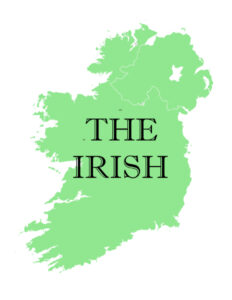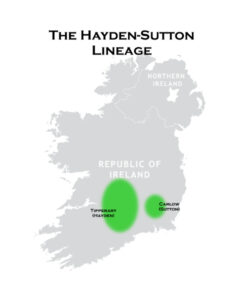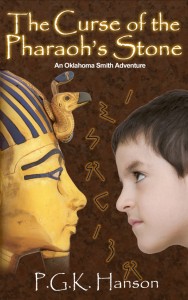I have finally gotten around to working on the title pages for my mom’s genealogy book.
Working with the image I chose to use for my title pages proved a little more difficult than I had anticipated due to my own software limitations, but I figured it out and am now proceeding happily.
I had decided to use a basic outline map of the British Isles as my title page backdrops.* My mom’s lineages come mainly from Ireland and Scotland, so I divided the book into sections. The Country Title page has the appropriate country as the backdrop.
Then, with each section, I have the surname chapters. The appropriate county is still the backdrop, but in gray, with color highlighting where the family came from in that country.
I figured since I am paying for a full-color book, I should make the most of it! Using this scheme is a great way to have the reader oriented without having to use a separate map page. Since many readers may not know where these places are, and are not familiar with the geography, I had wanted a way to provide this info.
Hopefully the title pages look nice as well as being informative.
*Thanks to Base map © maproom.net




December Already?!–CoronaLife Day 628
How is it December already? As often happens with me, October dragged, and November flew.
I have had a rather productive week. Since I am expecting the proofread of my genealogy book back soon, I put my shoulder to the wheel to get everything else I needed finished.
I completed all the title pages. I had already had the chapter tree charts done. And today I finished up the photo pages I will be including in the book.
I ended up with 26 pages of photos. Hopefully I will not need to cull them for page count.
Aside from any fixes I need to make from the proofread, the only other thing will be the cover. I can’t do that until I begin the publishing process, when I will be given a cover template to fit the page count. I know what I want to do for the cover, so once I have the template it should go quickly.
So here we are on the other side of Thanksgiving, with the end of the year barreling toward us. I have other projects I need to wrap up in the next couple of weeks, so I will be busy as an elf for a while.
I hope all of you had a warm and safe Thanksgiving. I enjoyed getting together with family once again.
What end-of-year projects are you working on?